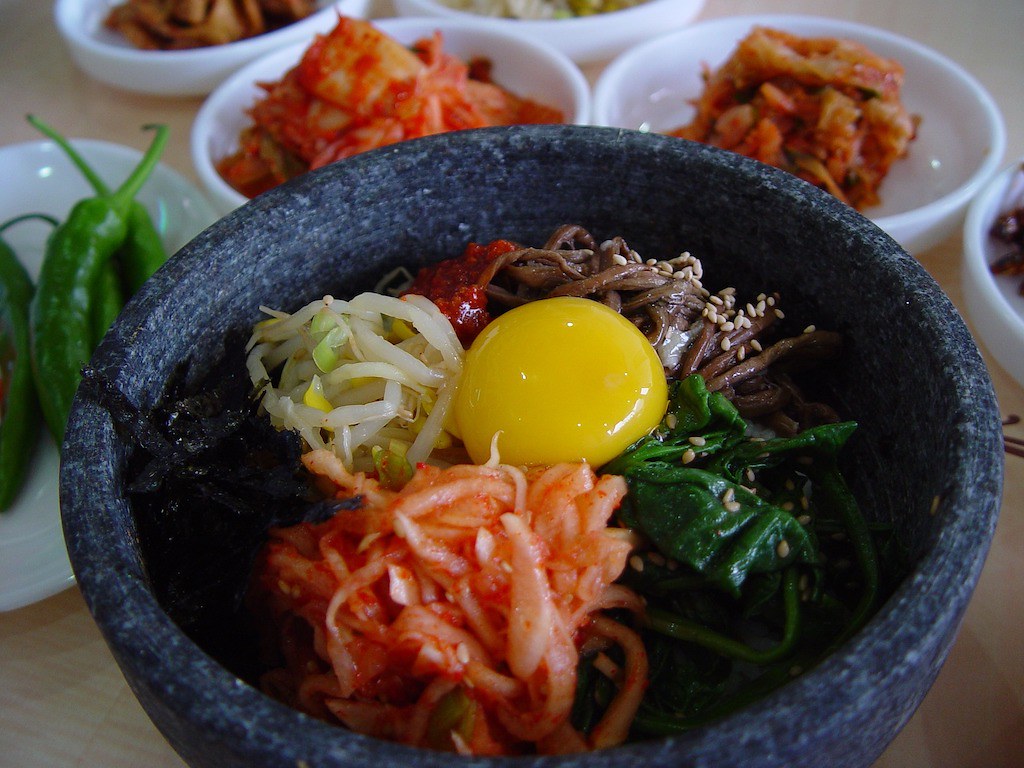This post may contain affiliate links. Please read my disclosure for details at the bottom of this page. As an Amazon Associate, I earn from qualifying purchases on this post comparing a ttukbaegi from a dolsot–‘Ttukbaegi vs Dolsot: What Is the Difference?’
Recently, on the blog, we began to take a deep dive into Korean cooking tools. These tools, such as the onggi, ttukbaegi (or ddukbaegi), and dolsot, are an integral part of Korean cooking culture. Many of the cooking traditions go back hundreds, if not thousands, of years. In these individual articles, we explain what these tools are as well as how to use and maintain them.
While we wrote about the ttukbaegi and dolsot individually, many people have since reached out and asked about the exact difference between the two. After all, both tools are bowls used as cookware and as a serving dish. The difference between the two is very simple. Soon, you will easily be able to differentiate the two!
So, ttukbaegi vs dolsot: what is the difference?
What is a Korean Ttukbaegi?
A ttukbaegi is a small black or brown earthenware bowl used for cooking and serving.
People use this type of pot to cook soups, stews, and steamed dishes. Then, the pot is used to transfer everything to the table and as a serving dish. Because these pots are such good conductors and retainers of heat, once placed on the table, the stews arrive hot and bubbling.

What Is a Korean Dolsot?
Like a ttukbaegi, a Korean dolsot is a type of bowl/pot used as cookware and for serving. This style of pot is typically made from porous stoneware such as granite. The Korean word ‘dolsot’ literally translates into English as ‘stone pot.’
Traditionally, people use the dolsot to steam rice as well as serve rice-based dishes such as bibimbap and gulbap. Once again, like a ttukbaegi, people use these as a pot in the kitchen before bringing out the hot dish and serving it at the table.

Ttukbaegi vs Dolsot: What Is the Difference?
In the end, there are two main differences between the ttukbaegi and dolsot. They are the material and cooking use!
- Material: A ttukbaegi is made from earthenware pottery while a dolsot is made from stoneware.
- Cooking Use: While both sit on the stovetop, you can use a ttukbaegi to make a multitude of dishes such as soups and stews. On the other hand, a dolsot is used for a limited and specific type of rice dish such as ‘dolsot bibimbap.’
If you are in the market for a multi-use pot and want to make a multitude of different traditional dishes, I recommend getting a ttukbaegi. On the other hand, though it has a limited range of use, the dolsot does make a difference in the bibimbap experience. Once you try dolsot bibimbap, you will never want to serve it in another type of bowl again!
Do You Own a Korean Ttukbaegi or Dolsot?
In the end, do you own a Korean ttukbaegi or dolsot? If so, let us know in the comment section below. What are your favorite dishes to make?
If you would like to continue learning about Korean cooking tools, you can find further items and explanations listed below. We also listed some of our favorite Carving A Journey Korean recipes! For reference, many recipes are influenced by our blended Korean and Southern heritage.
Korean Cooking and Serving Tools:
Carving A Journey Korean Recipes:
- Korean Braised Lotus Roots
- Tteokkochi (Korean Rice Cake Skewers)
- Jumeokbap (Handmade Korean Rice Balls)
- Bibimmyeon (Korean Spicy Cold Noodles); And
- Korean Banana Flavored Milk
If you have any questions or comments, you can also email us at [email protected].
And, finally, we would love to hear from you through our social media as well! You can follow us at @carvingajourney on Instagram, Twitter, Facebook, and Pinterest. Or, if you would like more articles like these, you can subscribe to our blog by joining our mailing list. We hope you enjoyed reading the comparison article about ttukbaegi vs dolsot! Thank you so much for stopping by!
Carving A Journey is a participant in the Amazon Services LLC Associates Program, an affiliate advertising program designed to provide a means for sites to earn advertising fees by advertising and linking to Amazon.com. Although we may earn commissions for our endorsement, recommendation, testimonial, and/or link to any products or services from this website, these opinions are my own and I fully support these products.

